Casa Blanca Archaeological Park
The Casa Blanca Archaeological Park is 15 acres (6 hectares) in extent, and represents a fragment of a much larger site that has been mostly destroyed due to the urban sprawl of modern Chalchuapa.
Together with the adjacent El Trapiche area (north of the park), Casa Blanca became the center of an important early Maya realm which arose at the end of the Late Preclassic period (approximately 250 BC - AD 250). The largest pyramid known in El Salvador was built during this time in the El Trapiche sector, and a stela was erected at its base. Unfortunately, the Maya text and imagery carved on this stela (now in the site museum) were almost entirely erased in antiquity. Another structure dating from this time (which was investigated before its destruction) contained the remains of over 30 individuals who had apparently been sacrificed. They may have been captives taken during one of the military campaigns conducted by this ancient kingdom.
Although this was Casa Blanca's apogee, the site has produced evidence of human activity many centuries both before and after. The earliest evidence currently known dates back nearly 5,000 years and consists of pollen contained in stratified layers beneath a small lake just north of the site. This pollen record atests to the destruction of an ancient primary forest at that time, coincident with maize cultivation, dramatically reflecting the introduction of intensive agriculture to this region and the establishment of village life which formed the basis of Mesoamerican civilizations. The most recent features found at Casa Blanca are burials with offerings dating to the period ending with the Spanish invasion, the Postclassic.
The Government purchased the park are in 1977. Following several years work in the creation of infrastructure by the El Salvador Archaeological Project of the University of Nagoya, Casa Blanca was inaugurated as a park in 2004.
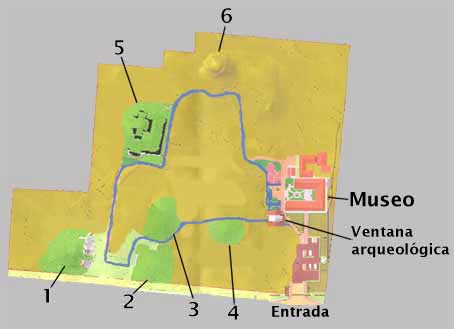
Map of the Casa Blanca Archaeological Park, showing Structures 1 to 6. The archaeological trail is shown in blue (adapted from a map produced by the El Salvador Archaeological Project of the University of Nagoya).
The park features 6 prehispanic structures, consisting of 3 pyramids and 3 minor buildings. As a result of a decade of work by the current El Salvador Archaeological Project of the University of Nagoya, today the visitor may admire two partially restored pyramids (Structures 1 and 5) along the archaeological trail.
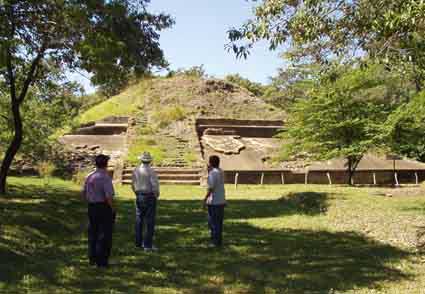
Structure 1
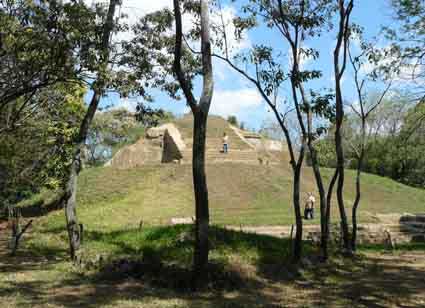
Structure 5
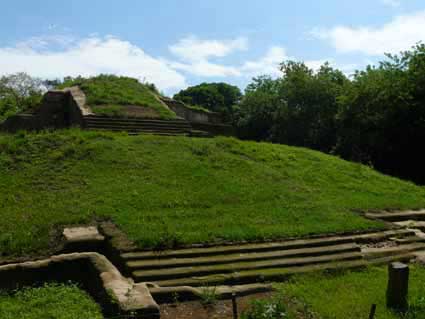
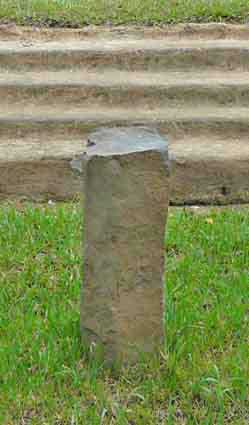

Structure 5 (left). Excavations at the base of its stairway discovered a monument of columnar basalt (center) associated with a sculpture (right), all dating to the Late Preclassic period (photograph of the sculpture by Fabricio Valdivieso).
The architectureof the Casa Blanca Site Museum was inspired by the historic "casonas" of colonial haciendas (the main houses of ranches), with long covered walkways surrounding the gardens of a central patio. It was built with the traditional materials of adobe bricks and ceramic roof tiles.
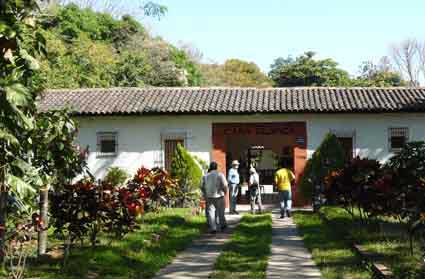
Entrance to the Casa Blanca Site Museum.
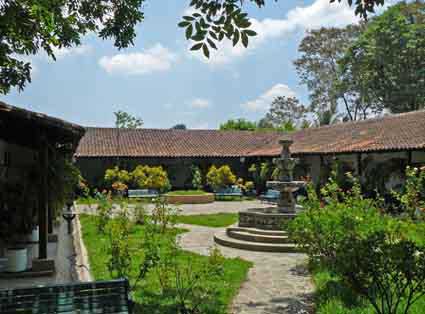
The museum's patio.
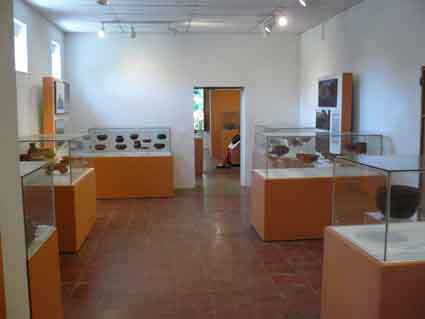
One of the 5 exhibit rooms at the museum.
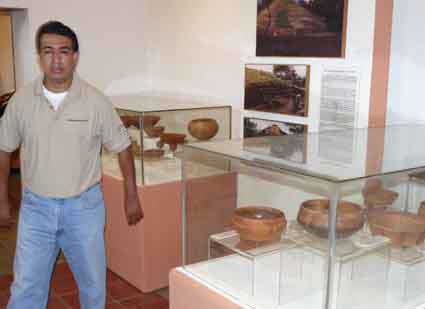
Mario Edgardo Portillo is the museum and park guide.
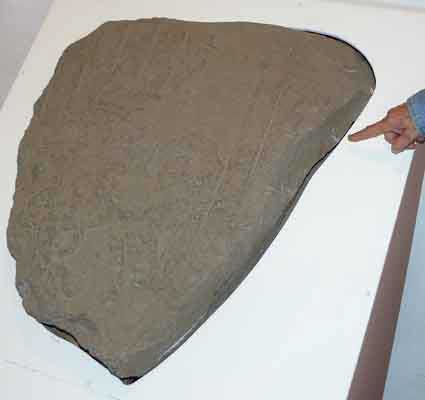
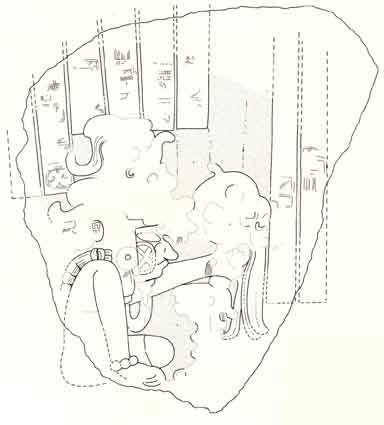
The museum displays the only known stela with Maya writing known in El Salvador, designated as Monument 1 from El Trapiche (a sector north of the park). Sadly, this is only a fragment from a larger sculpture and almost all of its inscription was intentionally erased in antiquity. The drawing represents what remains of its columns of glyphs and a seated figure (drawing by William Coe, source: CONCULTURA).
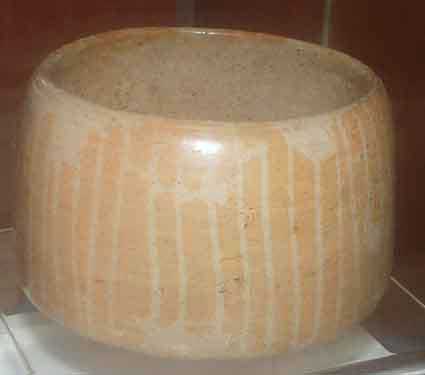
Most artifacts in the museum are from Casa Blanca's most important period, the Late Preclassic (500 BC to AD 250). This is an example of Usulután Izalco, a type of ceramic characteristic of the latter part of this period. It has negative decoration consisting of parallel lines on a light orange background.
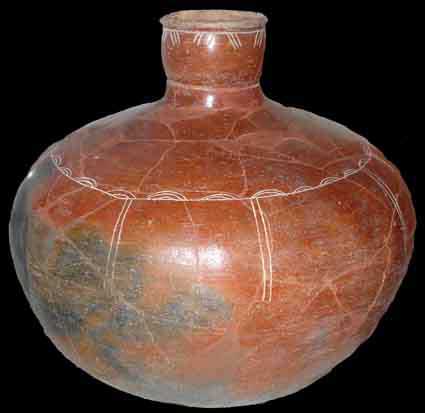
Lolotique is the name given to another common type of ceramic of the Late Preclassic in the western half of Salvadoran territory, often in this form, a water jar (cántaro).


The Casa Blanca site saw occasional use during the Postclassic period, apparently for burials with offerings like these. Tohil Plumbate (left) is a type diagnostic of the Early Postclassic (AD 900-1200) and was the most widely traded ceramic in Mesoamerica. Chinautla Polychrome (right) dates to the Late Postclassic (AD 1200-Conquest) and is was produced by the Poqomam, the Maya group living in Chalchuapa on the eve of the Spanish conquest. Like many other regions of Mesoamerica, the conquest of Salvadoran territory effectively began years before the actual arrival of Spaniards, with a devastating pandemic of smallpox which they introduced in Mexico and quickly swept across vast distances, appearing here in just a few months time, during 1520. It is generally held that this first pandemic (of many more which were to follow) killed around half or more of the population. The first Spanish troops invaded this region in 1524 under the command of Pedro de Alvarado. Chinautla Polychrome was discovered by archaeologists in the 1940s in another Poqomam area, the Valley of Guatemala. While excavating at the huge site of Kaminaljuyú, they uncovered a burial pit that had been dug in the playing field of a much older ballcourt. The burial in this case was that of a horse, with an offering of two Chinautla Polychrome vessels (because of this, the type was briefly known as "Horse Polychrome"). This sensational find certainly dates to the period of Spanish conquest, when horses were strange new creatures deserving of such special treatment.
One of the main excavations of the current archaeological project is now roofed. Here visitors may see a series of natural and cultural strata, amongst which is the layer of white volcanic ash deposited by the huge Ilopango eruption (5th century AD).
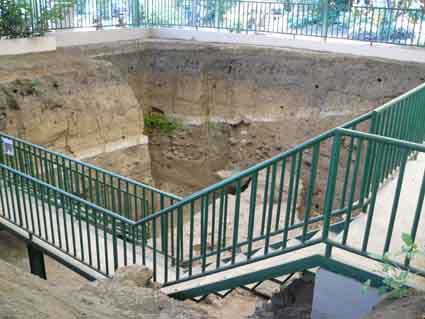
The archaeological window at Casa Blanca. The white layer of Ilopango volcanic ash is clearly visible. The roof,access stairs, and viewing platform were built with aid from the Government of Japan.
Many people visit Casa Blanca solely for its indigo workshop ("taller de añil"). The workshop was established with the technical and economic aid of the Government of Japan. The workshop is managed by two people who were trained under this program, Cruz Liset Clavel and Cruz Emilia Guevara de Girón, who together teach different methods to dye cloth with indigo and other natural substances. They also produce shirts, blouses, purses, shawls, and other products colored with the rich blue of natural indigo which may be purchased in the workshop. Julio Ascencio was trained as a "puntero", the person who manages the production of indigo starting with its raw material - the plant called "jiquilite" - and who determines the proper "point" in its fermentation. The workshop has indigo processing tanks (called an "obraje") which you might be able to see in use if you are fortunate enough to visit on a production day. And if not, you can see something of the process in the following photos.

The indigo workshop.
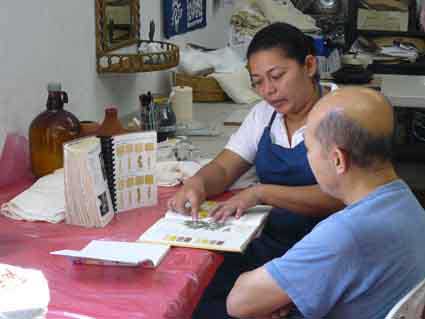
Cruz Liset Clavel teaching a class on natural dyes. The classes are open to the public. For further information, please call the park at 2408-4641.

A production day at the indigo tanks (the photograph does not convey the strong and characteristic odor of the water imbued with indigo essence). Bundles of jiquilite plants are left soaking overnight in the tank. Then they are removed and the water is oxygenated (here plastic tubs are being used for this purpose). A critical task of the "puntero" is to judge when the oxygenation has reached its "point", at which time the water is left undisturbed. The "point" is determined by the color of the water, the amount of foam, and the appearance of the water's surface which acquires an iridescent quality. Once left in repose, the indigo slowly precipitates to form a layer of sediment on the floor of the tank. The water is carefully drained and the indigo is dried under the sun.
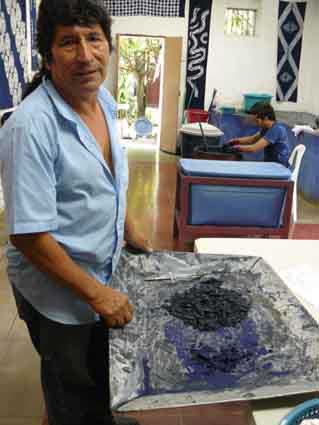
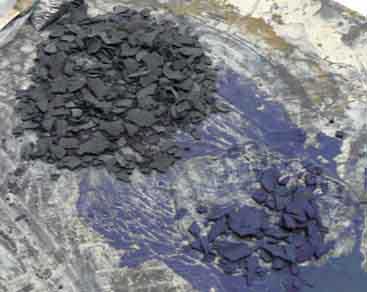
The "puntero" Julio Ascencio shows samples of dried indigo in a wooden tray. While indigo is generally intense blue, its color varies in its production run, and may range from almost black to sky blue. Julio is showing the products of two runs. Julio was born in Chalchuapa and has been working with the Government for three decades at archaeological parks and excavations. He also has extensive knowledge of local plants and their traditional uses.
FUNDAR participated in the management of Casa Blanca between May, 2008 and December, 2009. Our activities at the park concentrated on maintenance, repairs, and other actions of high priority.
Maintenance included gardens, weed control, and cleaning.
Mundane yet important tasks were: repairing leaks in the museum's roof, repairing fixtures in the visitor restrooms, and repairs to the electrical system.
We suspended brush cutting in the wooded areas of the park (it was a customary practice). This suspension will favor the growth of lower story plants.
The archaeological (interpretive) trail wasimproved by eliminating some segments and marking a single circuit that leads visitors to the principal structures.
Two high priority actions were:
- The construction of ramps in the area of the museum and the archaeological window in order to facilitate access for everybody.
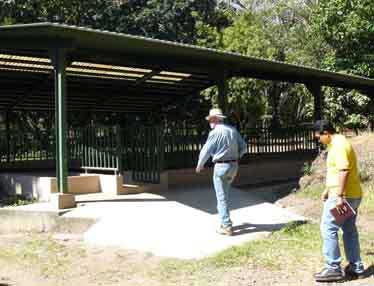
One of the ramps now leading to the archaeological window.
- The construction of prefabricated concrete walls to replace frequently cut cyclone fence on the park's boundaries for security and to improve the visual aspect. Casa Blanca is unfortunately surrounded by high density housing, and while a concrete wall would not normally be considered an improvement, you may agree that in this case, it is.
BEFORE
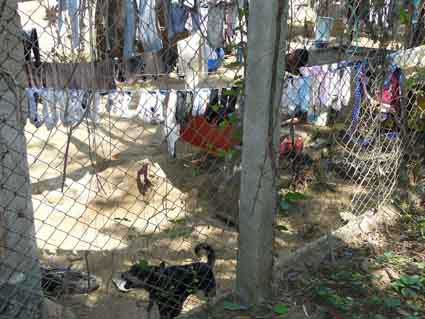
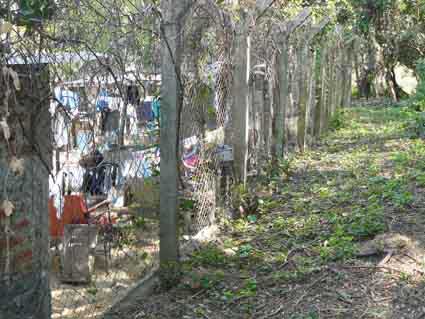
AFTER
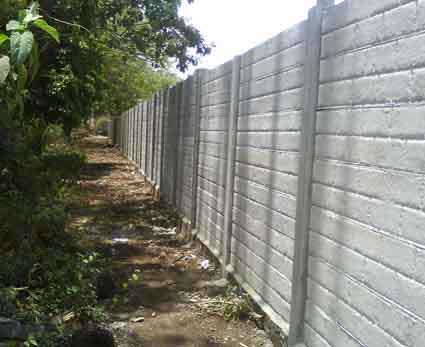
The prefabricated concrete wall was later painted forest green.
